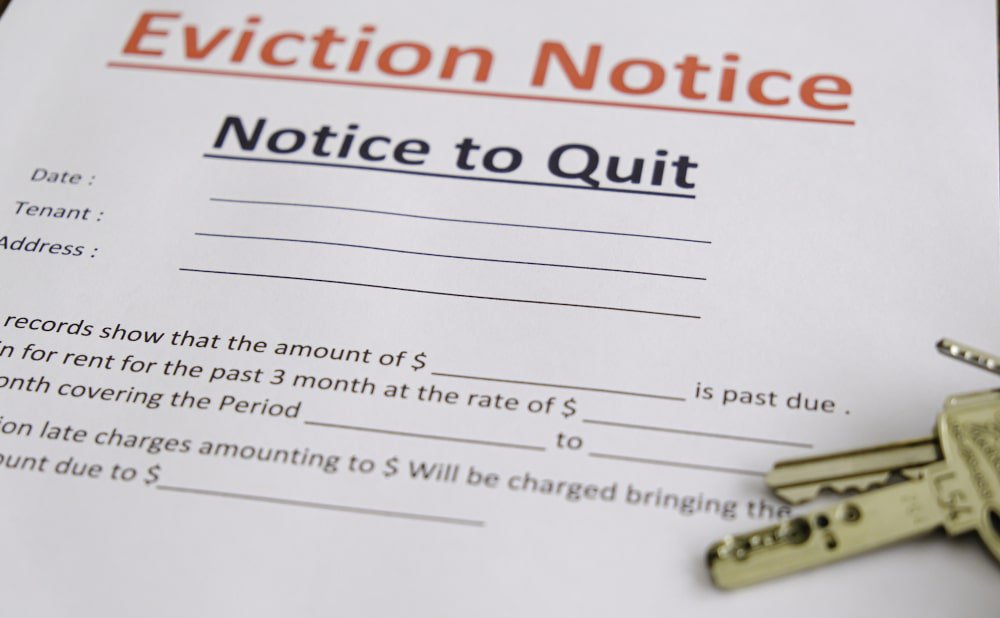What Is an Eviction and How to Handle It in Ontario — Legal Guide for Landlords

What Is an Eviction Under Ontario’s Residential Tenancies Act
Eviction is one of the most serious actions a landlord can take in Ontario. It removes a tenant’s legal right to occupy a rental unit and returns possession to the landlord, but only under strict legal procedures. The process is governed by Ontario’s Residential Tenancies Act (RTA) and administered through the Landlord and Tenant Board (LTB), which ensures both landlords and tenants are treated fairly.
Under the RTA, an eviction cannot occur simply because a lease ends or the landlord wishes for the tenant to vacate. It must be based on one of the specific legal grounds set out in the Act, such as not paying rent, substantial damage, or the landlord’s personal use, and must follow the proper notice and application process. In almost all cases, the LTB must review the evidence and issue an official eviction order before a tenant can be required to vacate.
This framework ensures balance. Landlords have a lawful path to recover their property while tenants are protected from unfair or premature removal. Understanding how the RTA and LTB interact helps landlords navigate the process confidently and avoid costly legal mistakes.
When Can a Landlord Legally Evict a Tenant in Ontario?
Landlords can only evict for reasons explicitly permitted by the RTA. Common legal grounds include:
| Ground for Eviction | Explanation | Statute Reference |
|---|---|---|
| Non-payment of rent | Tenant has not paid rent on time. After an N4 notice, if rent remains unpaid after 14 days, the landlord may apply to the LTB. | RTA s.59 |
| Substantial interference or damage | Tenant damages the property or disrupts others’ enjoyment. | RTA s.64–65 |
| Illegal acts | Tenant commits illegal activities on the premises (e.g., drug trafficking). | RTA s.61 |
| Landlord’s personal use | The landlord or family member intends to move in. | RTA s.48 |
| Demolition, conversion, or major repair | Building will be demolished, converted, or substantially renovated. | RTA s.50–52 |
Each reason has different timelines and evidence requirements. Misusing a ground, such as claiming “personal use” and then re-renting the unit, can lead to penalties of up to $35,000 and compensation orders under RTA s.57.1.
What Types of Eviction Notices Exist in Ontario?
Ontario uses standardized Notice to End Tenancy forms. Each corresponds to a specific legal ground:
| Form | Reason | Minimum Notice Period |
|---|---|---|
| N4 | Non-payment of rent | 14 days |
| N5 | Damage or interference | 20 days (7 days if repeated) |
| N6 | Illegal acts or misrepresentation | Immediate or 10 days |
| N7 | Safety risk or persistent late payment | 10 days |
| N12 | Landlord’s personal use | 60 days |
| N13 | Demolition or major repairs | 120 days |
Each notice must use the official LTB form and include the correct termination date, reason, and tenant information. Incorrect or incomplete notices are among the most common causes of dismissed applications at the LTB.
How to Properly Issue an Eviction Notice in Ontario
Serving an eviction notice is more than just handing a document to a tenant. The RTA specifies approved delivery methods:
- In person to the tenant
- To an adult in the unit
- By mail or courier
- By email (only if the tenant has agreed in writing)
The notice must clearly state:
- The reason for eviction
- The termination date
- The landlord’s name, signature, and contact information
- The unit’s address
- Instructions for resolving the issue (if applicable, e.g., paying overdue rent)
Once served, landlords must wait until the notice period ends before applying to the LTB. Filing too early or using an incorrect service method can invalidate the process.
How to Evict a Tenant in Ontario Through the Landlord and Tenant Board
After the notice period, if the tenant hasn’t resolved the issue or moved out, the landlord must file an L1 or L2 application with the LTB:
- L1: For non-payment of rent
- L2: For all other reasons (e.g., personal use, damage)
Typical Eviction Timeline
- Notice served – e.g., N4 (14 days)
- Application filed – Day 15 or later
- Hearing scheduled – Usually within 3–8 weeks
- LTB hearing – Both parties present evidence
- Order issued – If approved, tenant has 11 days to move
- Sheriff enforcement – If tenant stays beyond that, landlord must request enforcement through the Sheriff’s Office
Case data from the Ontario Ombudsman’s 2023 Annual Report shows that average processing time from notice to eviction order ranges from 60 to 120 days, depending on backlog and completeness of documents.
How Quickly Can a Landlord Evict a Tenant in Ontario?
Eviction speed varies based on grounds, documentation, and tribunal scheduling.
Typical durations:
| Eviction Type | Approximate Duration |
|---|---|
| Non-payment (N4/L1) | 2–3 months |
| Personal use (N12/L2) | 3–4 months |
| Safety/illegal acts (N7/N6) | 1–2 months |
| Demolition or renovation (N13) | 4+ months |
While “fast” cases may resolve in eight weeks, most take longer due to hearing backlogs and tenant appeals.
Can a Landlord Ever Evict a Tenant Immediately in Ontario?
Immediate eviction (meaning removal without notice or LTB approval) is not permitted under Ontario law. Even urgent cases, such as serious safety threats or criminal activity, still require an LTB order (often through expedited hearings).
In exceptional cases, the Board can shorten notice periods or issue interim orders if the tenant’s behaviour poses an immediate risk. However, landlords must never remove doors, change locks, or shut off utilities. Doing so qualifies as an illegal eviction and can result in fines or damages.
What Happens After an Eviction Order Is Issued?
Once an LTB eviction order is granted, enforcement can only be carried out by the Sheriff’s Office under the Courts of Justice Act.
Steps:
- File the order with the local Sheriff.
- Sheriff schedules enforcement, usually within 1–2 weeks.
- Sheriff attends the property, supervises tenant removal, and returns possession to the landlord.
- Landlord changes locks after enforcement is complete, not before.
The landlord must handle any tenant belongings left behind according to RTA s.41–42, providing storage or disposal within legal limits.
How Can Landlords Avoid Unlawful Eviction Claims?
Common errors that lead to unlawful eviction claims include:
- Changing locks without an LTB order
- Removing tenant property
- Threatening or harassing tenants
- Giving false personal-use notices
- Serving incorrect or back-dated forms
Compliance Checklist:
- Use official LTB forms only
- Serve notice via approved methods
- Keep proof of service (e.g., affidavit, email confirmation)
- Apply to the LTB. Never self-evict!
- Wait for a Sheriff-executed order before changing locks
Penalties for unlawful evictions can include compensation up to 12 months’ rent and additional fines under RTA s.57.1.
How Should Landlords Document Communication During the Eviction Process?
Proper documentation protects landlords if disputes reach the LTB.
Essential Records:
- Copies of all notices and service receipts
- Email and written correspondence
- Rent ledger showing payments or arrears
- Photos of damage (if applicable)
- LTB filings and decisions
Maintaining a clear timeline of events helps prove good faith and procedural compliance. A simple spreadsheet or binder with dates and attachments works well.
What Support Is Available for Landlords During the Eviction Process?
Landlords can access several forms of legal and procedural support:
- Licensed paralegals : Authorized to represent landlords before the LTB.
- Landlord Self-Help Centre : Free legal information and template guides
- Community Legal Clinics : Some offer assistance for small landlords.
- LTB resources : Step-by-step filing and procedural guidance.
For complex or repeated cases, hiring a paralegal or lawyer can prevent costly mistakes.
How to Maintain Professionalism and Tenant Relations During Eviction
Even during eviction, maintaining a calm and professional tone helps reduce stress and conflict.
Best Practices:
- Communicate in writing whenever possible.
- Stay factual. Avoid emotional or accusatory language.
- Offer repayment or resolution options early.
- Keep interactions brief and respectful.
These steps can prevent escalations and demonstrate good faith to the LTB.
What Are the Most Common Reasons Eviction Cases Are Delayed or Dismissed?
The LTB dismisses or delays thousands of applications annually due to avoidable errors. The main issues include:
| Issue | Consequence |
|---|---|
| Wrong notice form or incorrect dates | Application dismissed |
| Improper service method | Notice deemed invalid |
| Missing rent ledger or proof | Evidence rejected |
| Filing too early | Application returned |
| Landlord absent at hearing | Case dismissed |
To avoid these pitfalls, landlords should double-check all forms and consider professional representation for their first few cases.
How Do Post-Eviction Obligations Work for Landlords?
After possession is regained, landlords still have legal duties:
- Handle belongings : Store or dispose of items per RTA s.41-42.
- Update ledgers : Note unpaid rent and repair costs.
- Return deposits : If applicable, refund unused rent or deposits.
- Report defaults : Unpaid rent may be reported to credit bureaus through collection agencies.
- Inspect unit : Document property condition before re-renting.
Maintaining professional conduct after eviction helps protect your reputation and ensures compliance.
Conclusion: What Must Ontario Landlords Remember About the Eviction Process?
Eviction in Ontario is a formal, rule-bound procedure. Landlords must:
- Use valid legal grounds under the Residential Tenancies Act
- Serve the correct LTB notice and respect timelines
- Obtain an LTB order before removing any tenant
- Enforce only through the Sheriff’s Office
By following these steps, landlords avoid unlawful eviction claims, maintain professionalism, and protect both their property and their rights under Ontario law.
If you are a landlord preparing for an eviction or need guidance on your legal rights and responsibilities under Ontario’s Residential Tenancies Act, contact Clover Mortgage today. Our team can connect you with trusted legal professionals and provide advice to help you protect your investment while staying fully compliant with provincial law.
References :





